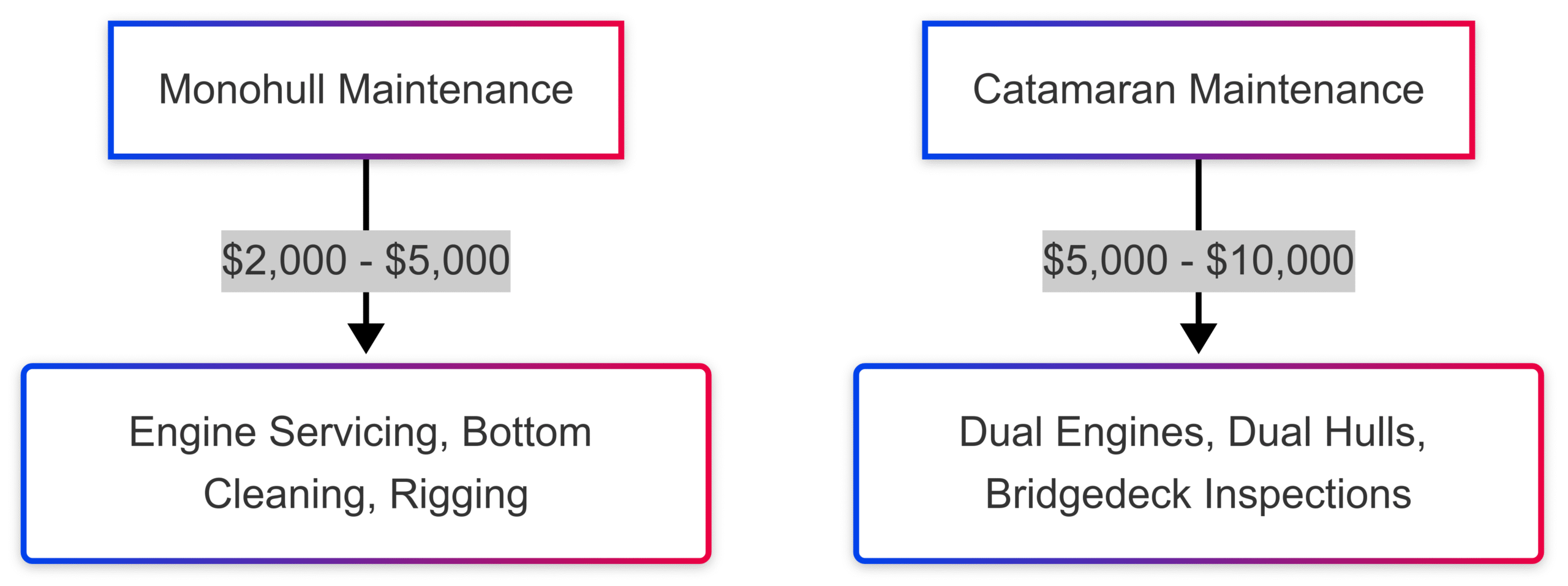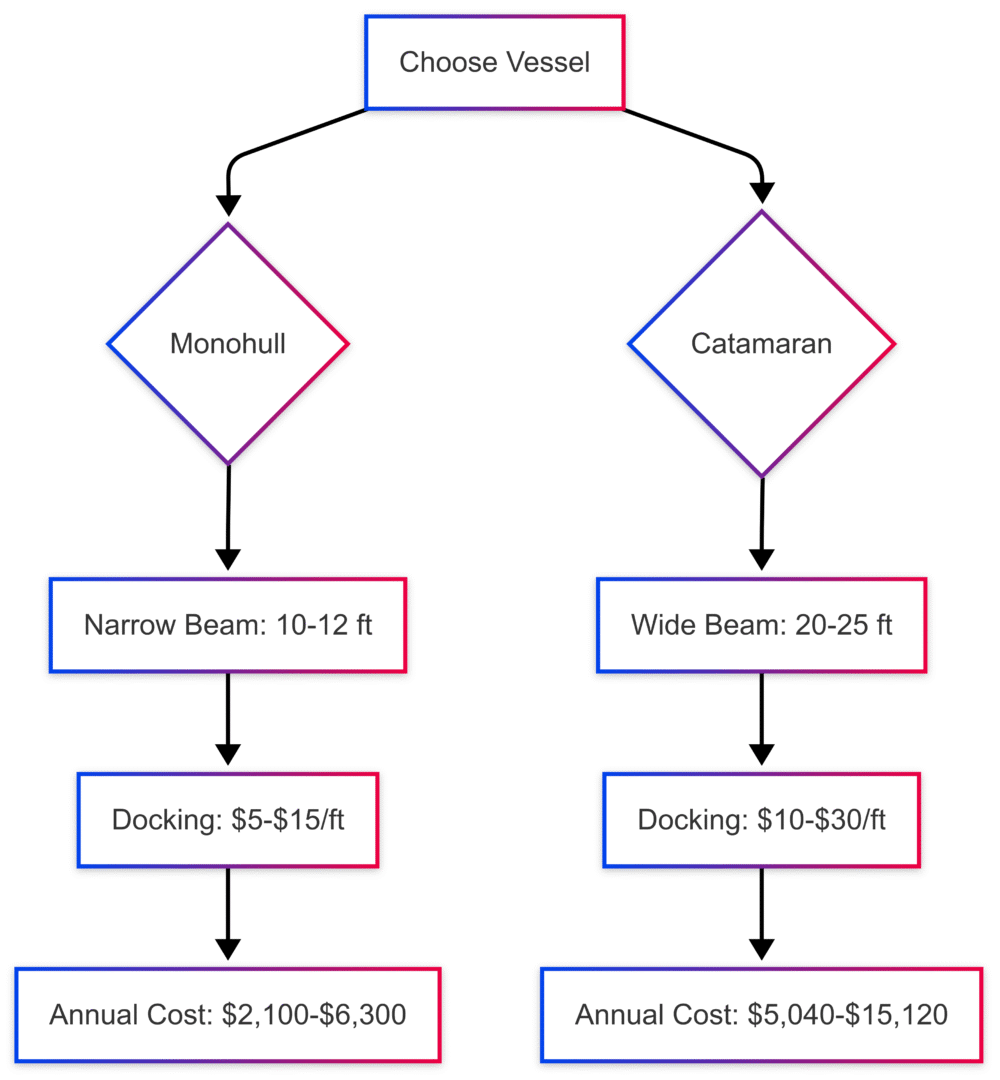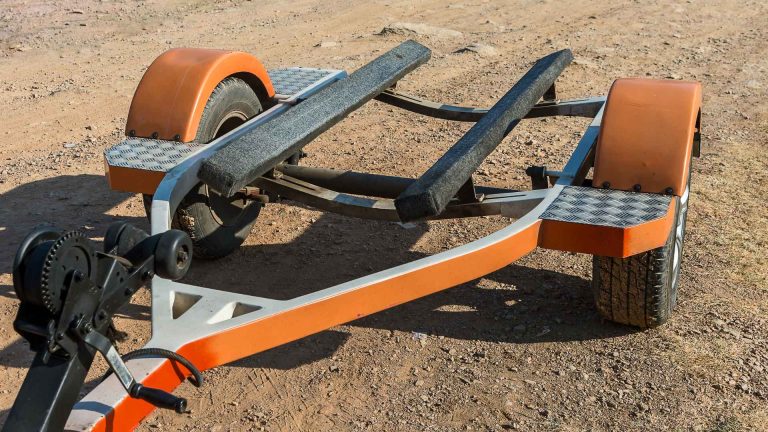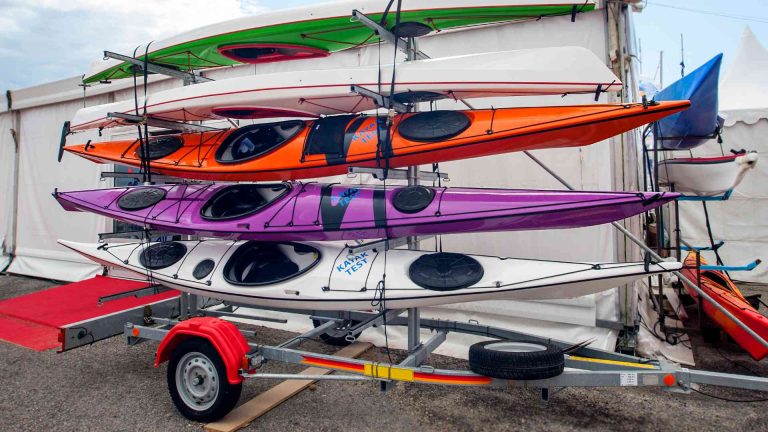Catamaran Vs Monohull Cost
Sailing enthusiasts face a pivotal decision when choosing between a catamaran and a monohull. Each vessel offers distinct advantages, but cost is often the deciding factor. This article delves into the financial aspects of owning and operating catamarans and monohulls, covering purchase prices, maintenance, repairs, docking fees, and other influencing factors. With a focus on practical insights, we aim to equip prospective buyers with the knowledge to make an informed choice for their sailing adventures.
Understanding Catamarans and Monohulls
Monohulls are single-hull sailboats, characterized by their traditional design, narrow beam, and deep keel. They are known for their simplicity, affordability, and ability to handle a variety of sailing conditions, particularly upwind sailing. Monohulls are typically 30 to 40 feet for cruising, offering a compact yet functional living space.
Catamarans, with their twin-hull design, provide greater stability, wider beams (often 50% of their length), and shallow drafts. Popular in the 40 to 45-foot range for cruising, catamarans offer spacious interiors and superior comfort, making them ideal for long-term liveaboards or family cruising. However, their complex construction drives higher costs.
The cost comparison between these vessels is not just about initial purchase price. Maintenance, docking, repairs, and operational expenses all play significant roles. Below, we break down these factors to provide a clear financial picture.
Purchase Price: New vs Used
New Sailboats
- Monohulls: A new cruising monohull in the 30 to 40-foot range typically costs $200,000 to $250,000. This price includes standard outfitting—basic navigation systems, sails, and modest interior finishes. For example, a Jeanneau Sun Odyssey 410 might retail around $220,000, while a Beneteau Oceanis 40.1 could approach $250,000 with added features like air conditioning or advanced electronics.
- Catamarans: New cruising catamarans, typically 40 to 45 feet, start at $350,000 and can exceed $500,000 for high-end models. A Lagoon 42, a popular choice, starts at approximately $400,000, while a Bali 5.4 with premium features like a flybridge and watermaker can reach $600,000. The higher price reflects the catamaran’s complex construction, larger size, and luxury fittings.
Why the Price Gap?
- Construction Complexity: Catamarans require stronger materials and precise engineering to connect two hulls across a wide beam, increasing labor and material costs.
- Size Disparity: Catamarans are often larger for equivalent cruising purposes, as their stability and space make them suitable for extended liveaboard use.
- Market Demand: Catamarans are in high demand, particularly for charters, which limits supply and drives prices higher.
Used Sailboats
- Monohulls: The used market offers significant savings. A 30 to 40-foot monohull from the 2000s in good condition can be found for $25,000 to $150,000. Older models (1980s or earlier) may cost as little as $10,000, though they often require upgrades. For instance, a Catalina 36 from the early 2000s might sell for $80,000, while a well-maintained Hunter 33 could be $50,000.
- Catamarans: Used catamarans retain higher value due to their desirability and limited supply. A 40-foot catamaran from the 2000s, such as a Prout 45 or Lagoon 410, typically ranges from $120,000 to $350,000. Late-model catamarans (less than 10 years old) rarely dip below $200,000.
Table 1: Purchase Price Comparison
| Vessel Type | New Price Range | Used Price Range |
|---|---|---|
| Monohull (30-40 ft) | $200,000 – $250,000 | $10,000 – $150,000 |
| Catamaran (40-45 ft) | $350,000 – $500,000+ | $120,000 – $350,000 |
Key Insight: Used monohulls are the most budget-friendly option, while used catamarans offer better value than new monohulls for those prioritizing space and stability.
Maintenance Costs
Maintenance costs depend on the vessel’s age, size, and construction material (typically fiberglass for both). Catamarans generally incur higher maintenance expenses due to their dual-hull design and additional systems.
- Monohulls: Annual maintenance for a 30 to 40-foot fiberglass monohull averages 10% of the boat’s value, or $2,000 to $5,000 for a $50,000 used vessel. This includes routine tasks like bottom cleaning, haul-outs, and engine servicing. Older boats may require more frequent repairs, such as replacing rigging or sails, adding $1,000 to $3,000 annually.
- Catamarans: Maintenance for a 40 to 45-foot catamaran is higher, averaging $5,000 to $10,000 per year for a $200,000 used vessel. The dual hulls, engines, and rudders double the cost of critical components. For example, servicing two engines versus one can add $1,500 annually, and anti-fouling both hulls costs more than a single hull.
Factors Driving Higher Catamaran Maintenance:
- Dual Systems: Two engines, rudders, and bilge pumps increase maintenance frequency and costs.
- Structural Complexity: The bridgedeck and hull connections require specialized inspections.
- Larger Surface Area: More deck and hull area means higher costs for cleaning and painting.
Chart: Annual Maintenance Cost Comparison

Money-Saving Tip: DIY maintenance, such as cleaning or minor repairs, can reduce costs by up to 30% for both vessel types, though catamarans require more time due to their size.
Repair Costs
Repair costs vary based on the type and extent of damage. Routine repairs (e.g., fixing leaks, electrical issues, or rigging) cost roughly the same for both vessels, but structural repairs differ significantly.
- Monohulls: Routine repairs, such as replacing a worn sail or fixing a bilge pump, range from $500 to $2,000 per incident. Structural damage, like hull cracks, can cost $5,000 to $15,000, depending on severity. Monohulls benefit from simpler construction, making repairs more straightforward.
- Catamarans: Routine repairs mirror monohull costs, but structural damage to the bridgedeck or hull connections is pricier, often $10,000 to $25,000. For example, repairing a cracked crossbeam on a catamaran requires specialized labor and materials, driving up costs.
Table 2: Repair Cost Comparison
| Repair Type | Monohull Cost | Catamaran Cost |
|---|---|---|
| Routine (e.g., sails, electrical) | $500 – $2,000 | $500 – $2,000 |
| Structural (e.g., hull, bridgedeck) | $5,000 – $15,000 | $10,000 – $25,000 |
Key Insight: Catamarans’ structural repairs are costlier, but their redundancy (e.g., dual engines) provides operational reliability, potentially offsetting downtime costs.
Docking and Mooring Fees
Docking fees are a significant ongoing expense, particularly for catamarans due to their wider beams.
- Monohulls: Docking a 30 to 40-foot monohull costs $5 to $15 per foot per month, plus marina fees (typically $100 to $300). For a 35-foot monohull, expect $175 to $525 monthly, or $2,100 to $6,300 annually. Their narrower beam (10-12 feet) allows multiple boats to share slips, reducing costs.
- Catamarans: A 40 to 45-foot catamaran, with a beam of 20-25 feet, incurs fees of $10 to $30 per foot per month, often 1.5 times the monohull rate due to space requirements. For a 42-foot catamaran, monthly costs range from $420 to $1,260, or $5,040 to $15,120 annually. In busy ports like the Mediterranean, fees may be calculated as length x 1.5, further increasing costs.
Chart: Docking Cost Workflow

Cost-Saving Strategy: Catamaran owners often anchor out to avoid high marina fees, leveraging their shallow draft to access free anchorages closer to shore.
Fuel Efficiency
Fuel costs are a minor but notable factor, especially for charters or motoring-heavy trips.
- Monohulls: With a single engine, monohulls consume less fuel when motoring, averaging 1-2 gallons per hour for a 30 to 40-foot vessel. At $4 per gallon, a 10-hour trip costs $40 to $80.
- Catamarans: Despite having two engines, catamarans are more fuel-efficient due to their lightweight design and lower water resistance. They consume 1.5-3 gallons per hour total, costing $60 to $120 for a 10-hour trip. However, catamarans often motor with one engine to conserve fuel, reducing costs to monohull levels.
Key Insight: Catamarans’ fuel efficiency advantage is marginal, but their ability to operate on one engine provides flexibility for cost-conscious sailors.
Factors Influencing Pricing
Several factors drive the cost differences between catamarans and monohulls:
- Construction and Materials:
- Catamarans require advanced materials (e.g., high-strength composites) and skilled labor, increasing build costs.
- Monohulls use simpler fiberglass molds, allowing mass production by brands like Catalina or Beneteau.
- Market Dynamics:
- Catamarans are produced in limited quantities by specialized yards (e.g., Lagoon, Fountaine Pajot), often in Europe, leading to higher prices.
- Monohulls benefit from a saturated used market, keeping prices low.
- Outfitting and Features:
- A $500,000 catamaran includes luxury features like electric winches, air conditioning, and spacious galleys, justifying the premium.
- A $250,000 monohull offers comparable systems but lacks the space and stability of a catamaran.
- Intended Use:
- Catamarans are favored for liveaboard cruising and charters, where comfort and space are paramount.
- Monohulls appeal to budget-conscious sailors or those prioritizing sailing performance.
Catamaran vs Monohull: Which Offers Better Value?
Catamarans excel for:
- Liveaboard Comfort: Spacious interiors, multiple cabins, and stability make them ideal for families or long-term cruising.
- Shallow-Water Access: A 3-4.5-foot draft allows anchoring in secluded coves.
- Charter Appeal: Higher rental rates offset ownership costs for charter operators.
Monohulls are better for:
- Budget Cruisers: Lower purchase and docking costs suit occasional sailors or those with limited funds.
- Sailing Performance: Superior upwind efficiency and tacking ability appeal to purists.
- Ease of Docking: Narrow beams simplify marina access and reduce fees.
Table 3: Value Proposition Comparison
| Factor | Catamaran | Monohull |
|---|---|---|
| Comfort | High (spacious, stable) | Moderate (compact, heeling) |
| Sailing Performance | Moderate (fast downwind, less efficient upwind) | High (efficient upwind, agile) |
| Cost Efficiency | Moderate (high initial/maintenance costs) | High (low purchase/docking costs) |
| Liveaboard Suitability | Excellent | Good |
Real-World Cost Example
Consider two sailors: one buying a 40-foot used Lagoon 400 ($250,000) and another purchasing a 36-foot used Catalina 36 ($80,000).
- Catamaran Owner:
- Purchase: $250,000
- Annual Maintenance: $7,500 (10% of value, adjusted for dual systems)
- Docking (6 months in marina): $7,560 ($30/ft x 42 ft x 6 months)
- Routine Repairs: $1,500
- Total First-Year Cost: $266,560
- Monohull Owner:
- Purchase: $80,000
- Annual Maintenance: $3,000 (10% of value)
- Docking (6 months in marina): $2,700 ($15/ft x 36 ft x 6 months)
- Routine Repairs: $1,000
- Total First-Year Cost: $86,700
Conclusion: The monohull is significantly cheaper upfront and annually, but the catamaran offers unmatched comfort and stability, potentially justifying the cost for liveaboard or charter use.
Practical Considerations for Buyers
- Budget: If your budget is under $100,000, a used monohull is the most feasible option. For $150,000-$300,000, a used catamaran becomes viable.
- Cruising Goals: Prioritize catamarans for long-term liveaboard cruising or charters; choose monohulls for weekend sailing or performance-focused trips.
- Maintenance Capability: Assess your ability to perform DIY maintenance to offset catamaran costs.
- Marina Availability: Research docking options, as catamarans face limited slip availability in busy ports.
Conclusion
The cost of owning a catamaran versus a monohull hinges on your priorities. Monohulls offer affordability, with lower purchase prices, maintenance, and docking fees, making them ideal for budget-conscious sailors or those who value sailing performance. Catamarans, while more expensive, provide superior comfort, stability, and space, appealing to liveaboard cruisers and charter operators. By weighing initial costs, ongoing expenses, and your sailing goals, you can choose the vessel that best aligns with your financial and lifestyle aspirations.
Happy Boating!
Share Catamaran Vs Monohull Cost with your friends and leave a comment below with your thoughts.
Read The Comprehensive Guide to the Cost of Buying a Sailboat until we meet in the next article.






